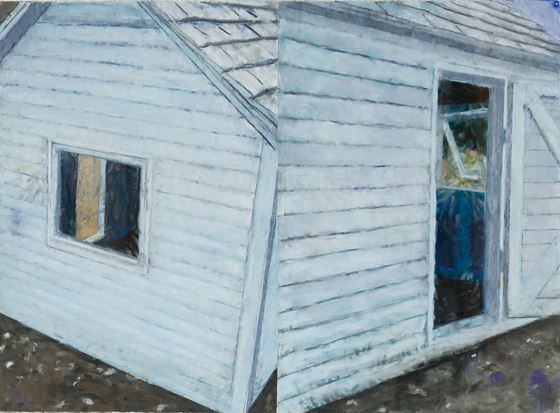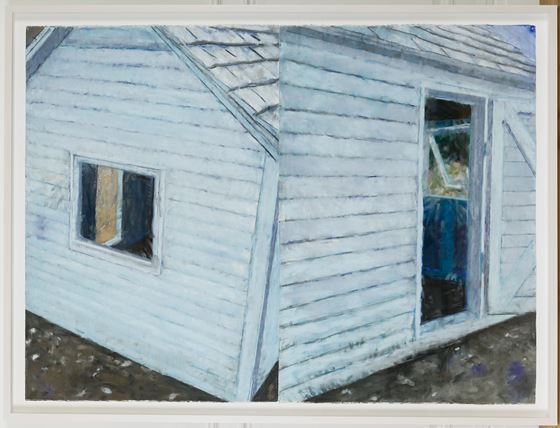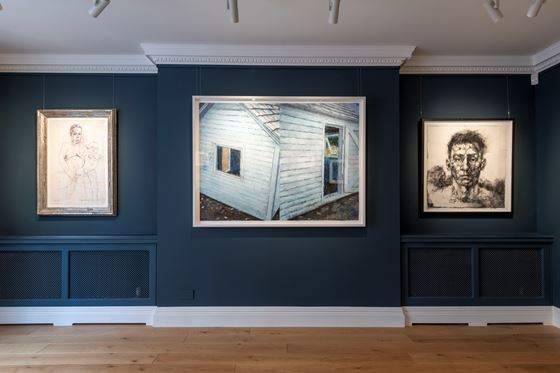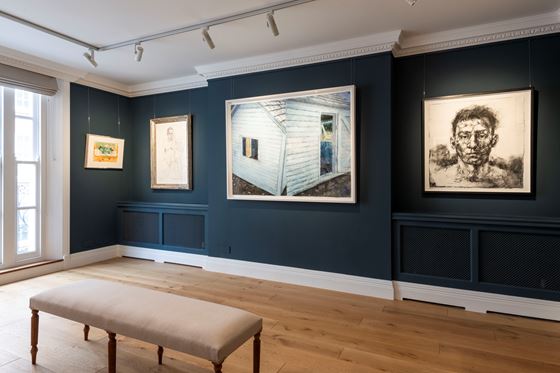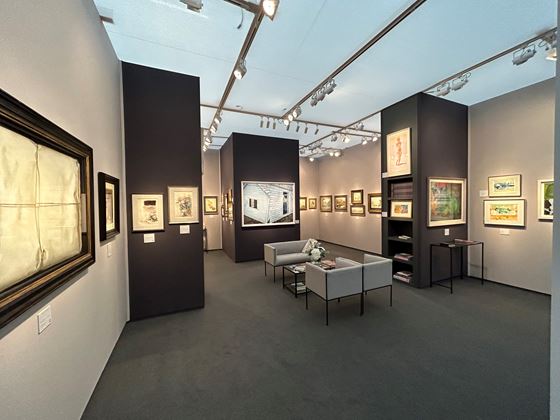Description & Technical information
A gifted draughtsman, Jennifer Bartlett was fond of working in pastels, particularly from the 1980s onwards. Drawn in 1986, the present sheet is the first of a series of large-scale pastel works, entitled Old House Lane, executed that year. Although houses (along with gardens, pools, the sea, and boats) had been a recurring motif in Bartlett’s paintings since the early 1970s, the structure depicted in this work is more specifically derived from the artist’s 1984 commission for the Volvo headquarters in Sweden. The Volvo scheme was made up of several site-specific elements, part of which was a freestanding ‘sculpture’ of ‘a small, square one-room house in the indigenous style of a Swedish summer cabin – with white-painted vertical clapboards, a copper roof and dirt floor.’ In the years following the Volvo project, Bartlett created similar three-dimensional sculptures of clapboard houses which were paired with paintings of the same motif; examples of these hybrid works are today in the Honolulu Museum of Art and the artist’s estate.
The present sheet, together with the rest of the Old House Lane series of pastels, was exhibited at the Paula Cooper Gallery in New York in 19874. As the critic John Russell noted, in a lead review of the exhibition in The New York Times, ‘Like almost all her best work, Jennifer Bartlett’s new pastels at the Paula Cooper Gallery, 155 Wooster Street, are a mix of symbolism and autobiography. Large in scale and confident in tone, they fill the entire gallery without any flagging of energy. Fundamentally they are made up of the same three disparate elements, combined and re-combined in a landscape that she got to know a year or two ago on the North Shore of Long Island. The elements in question are a boat, a house and a white picket fence. It is not clear that the little vessel has ever raised sail, let alone been to sea, and it may even be that it is primarily a sculpture, rather than a functioning boat. Nor is it clear that anyone could live in the house - first, because it is too small, and second, because it is still some way short of habitability. The fence is a fence, all right, and it comes with a fine big lock, but once again we are not quite sure what is being fenced in (unless it is, perhaps, ourselves). Veteran Bartlett-watchers will know that no matter how enigmatic their form, these three elements are enrolled in the service of a powerful and idiosyncratic imagination…They make a sturdy and eminently pictorial trio, but they also have an emblematic role, in that the boat stands for all boats, the house for all houses, the fence for all fences. They have strong American associations...The house is clapboard, painted white, like a million others. The fence is plain, but not dainty. Here and there, a stretch of dune, peppered with long grasses, gives the location away. It is a scene untouched by human presence. No footprint marks the sand. No mail has been left for the windowless house. No swimsuit dries on the prow of the boat. Seeing no empty cans, no garbage bags, no copies of last week's newspapers, we decide that the boat, the house and the fence are a self-sufficient community that leads its own life and sees humankind as irrelevant.’
As Russell’s review of the 1987 Old House Lane exhibition continues, ‘It could be that one or two images would give us the whole story, but that is not Ms. Bartlett’s way. Shifts of scale, weather and abutment give the show a continuous variety. All three elements appear sometimes as monumental presences, sometimes as delicate evocations silvered by moonlight. If the name of “pastel” suggests to you a furry, powdery, vulnerable presence, you can set that idea aside. Ms. Bartlett’s pastels are strong and plain in their execution...We do not have to pore over them, fearful that if we lean on the glass case they will turn to dust. They hold the eye from a considerable distance and have an almost architectonic quality. By adopting a mainline representational idiom, Ms. Bartlett may seem to many visitors to be carrying on an American tradition that goes way back to Homer and Sargent and has had many a gifted exponent since. And her pastels can, undeniably, be read and enjoyed on those terms. But their real hold upon us comes from the extent to which the boat, the house and the fence are metaphors not only for human archetypes that will be with us for all eternity but for a menage a trois that turns out, against the odds, to work well.’
The composition of Old House Lane, No.1 is, like many of Bartlett’s paintings, divided into two distinct parts. When asked in a recent interview why the diptych format appealed to her, the artist replied, ‘Ever since I was little I have thought that two are better than one. Not in terms of people, just in terms of looking at something. I like seeing things kind of “off” and from different points of view. The diptychs border on abstraction, even the figurative ones. The two panels create discord within the images themselves.’
Another large pastel drawing by Jennifer Bartlett from the 1986 Old House Lane series is today in the collection of the Brooklyn Museum, while two others were later included in the 1988 exhibitionRecent American Pastels in Middlebury College, Vermont. Most of the other Old House Lane pastels have remained in private collections since the 1987 Paula Cooper exhibition, although a handful of works from the series have appeared at auction in recent years.
Medium: Pastel on two sheets of paper
Dimensions: 112 x 152.5 cm (44¹/₈ x 60 inches)
Provenance: Paula Cooper Gallery, New York, in 1987
John C. Stoller & Co., Minneapolis, in May 1987
Private collection
Anonymous sale, New York, Sotheby’s, 25 September 2018, lot 250
Private collection.
Exhibitions: New York, Paula Cooper Gallery, Jennifer Bartlett: Old House Lane, February - March 1987; New York, Marianne Boesky Gallery, The House was Quiet and the World was Calm: Jennifer Bartlett 1970-2014, November - December 2019.
Categories: Paintings, Drawings & Prints
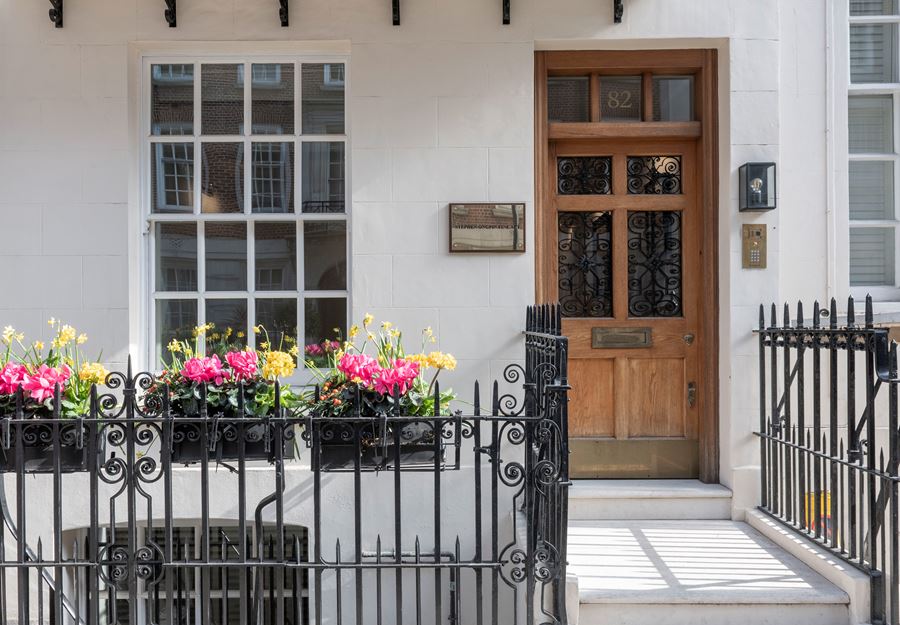
Discover the gallery
Stephen Ongpin Fine Art
Old Master, 19th Century and Modern Drawings, Watercolours and Oil Sketches
More Works From This Gallery
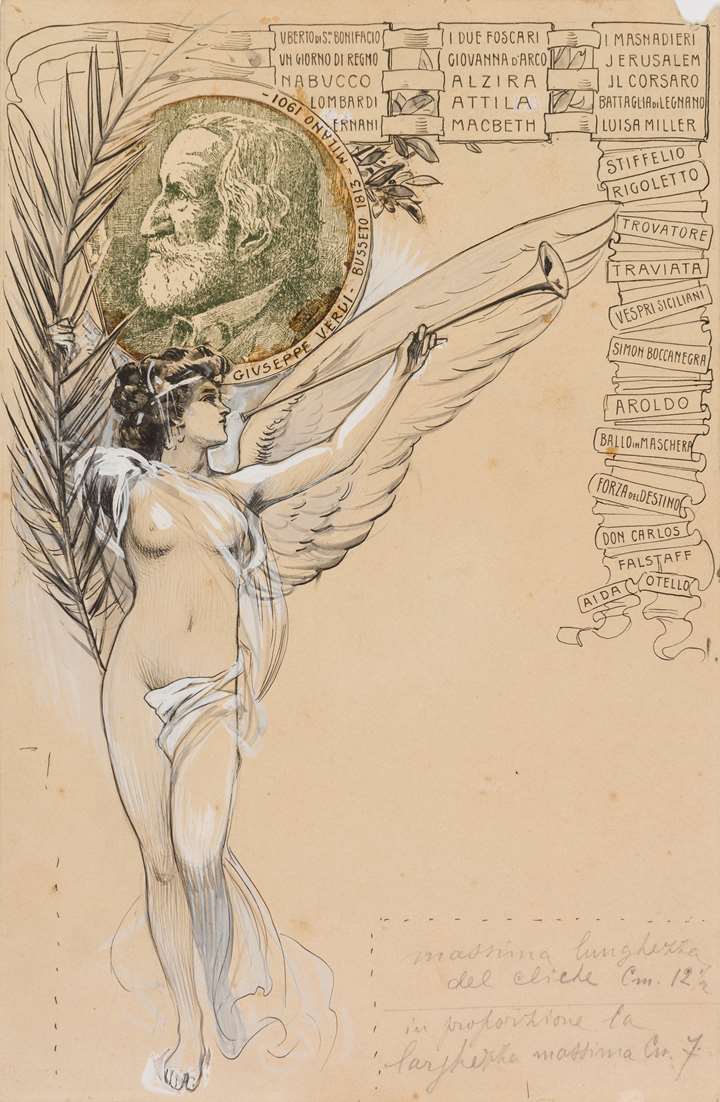
Stephen Ongpin Fine Art
An Allegory of Fame, in Honour of Giuseppe Verdi
Roberto FRANZONI (Bologna , 1882 - San Marino, 1960)
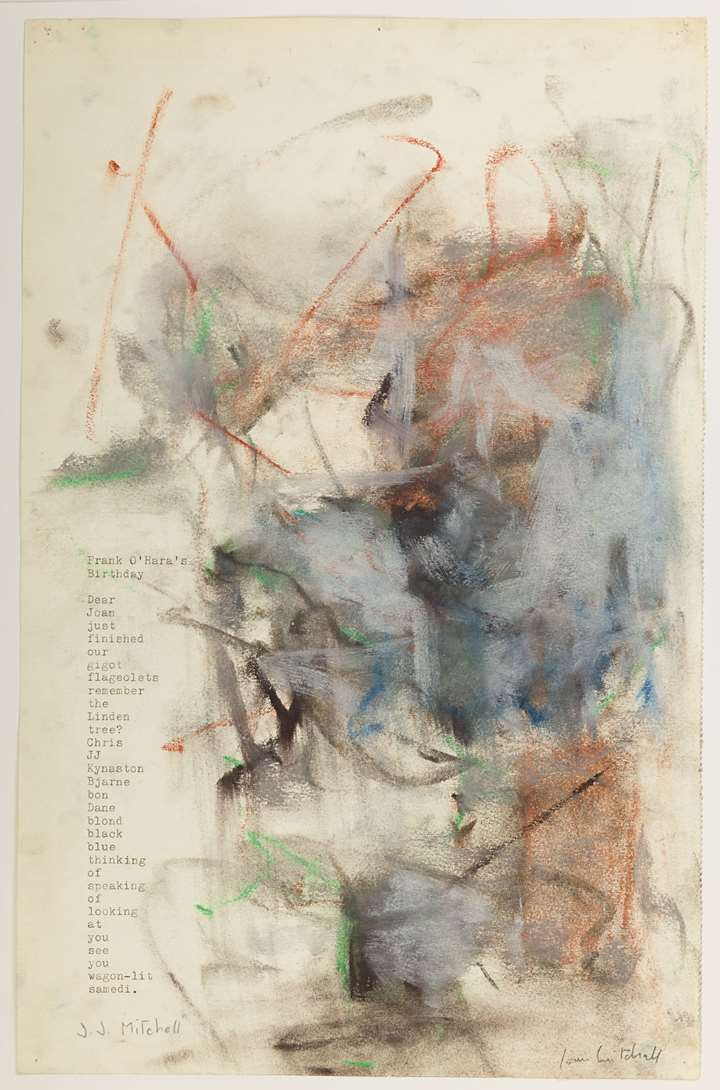
Stephen Ongpin Fine Art
Frank O’Hara’s Birthday
Joan MITCHELL (Chicago, 1925 - Paris, 1992)
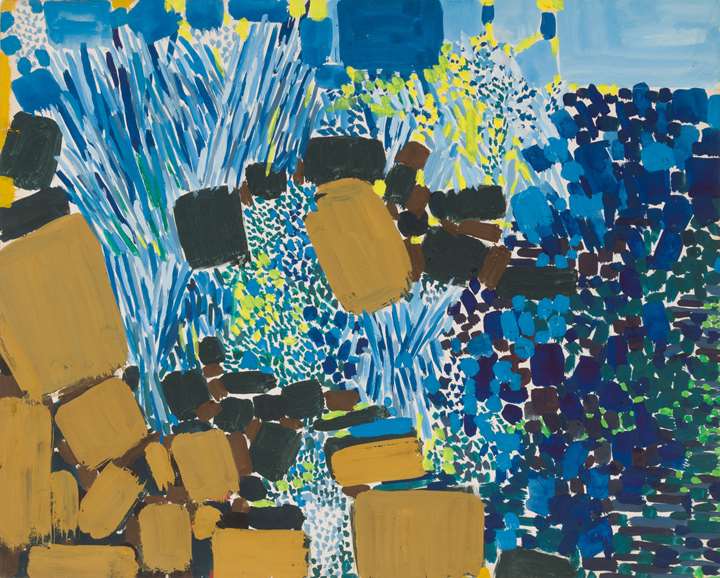
Stephen Ongpin Fine Art
Washerwoman
Lynne DREXLER (Newport News, 1928 - Monhegan Island, 1999)
![Illustration for Caprices Décoratifs: Oiseaux d’Asie (Mésanges) [Birds of Asia: Tits]](https://images.masterart.com/StephenOngpinFineArtMedia/Artworks/Jules-HABERT-DYS-Illustration for Caprices Décoratifs Oiseaux d’Asie (Mésanges) Birds of Asia Tits_T638451690185527753.jpg?width=720&height=1200&mode=max&quality=60)
Stephen Ongpin Fine Art
Illustration for Caprices Décoratifs: Oiseaux d’Asie (Mésanges) [Birds of Asia: Tits]
Jules Habert-Dys (1850 - 1930)

Stephen Ongpin Fine Art
View over the South Coast of Capri, Looking towards Monte Solaro
Carl Hummel (Weimar, 1821 - Weimar, 1907)
_T638203653890241467.jpg?width=720&height=1200&mode=max&quality=60)

